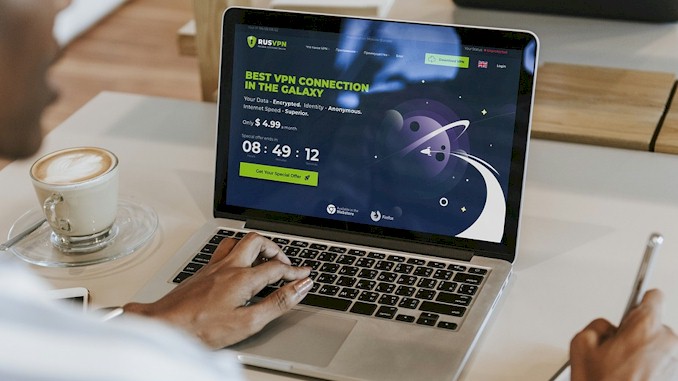VPN Troubles: Unchanging Location
You’ve probably heard that using a VPN can help you hide your IP address and access geo-restricted content. But what if you’ve tried to connect to a VPN server in another country and your location still shows up as your original one? Why doesn’t the VPN change your location? And how can you fix this problem? In this blog post, I’m going to explain the possible reasons why your VPN might not be changing your location, and what you can do to solve them. I have been using VPNs for years and I know how frustrating it can be when they don’t work as expected. That’s why I want to share with you some tips and tricks that will help you enjoy the benefits of a VPN without any hassle.
A VPN does not change your location by itself. It only changes your IP address, which is a numerical identifier that represents your device on the internet. Your location is determined by other factors, such as your GPS coordinates, your Wi-Fi network name, your browser settings, and the websites you visit. If any of these factors reveal your true location, your VPN will not be able to hide it.
Fortunately, there are some ways to prevent your location from being exposed by these factors. In the following sections, I will show you how to adjust your device settings, your browser preferences, and your VPN options to ensure that your location is hidden and your online privacy is protected. You will also learn how to test your VPN connection and verify that your location is changed successfully. So, stay with me and let’s dive into the details.
Why Your Location Matters Online
Your location is more than just a physical place. It’s also a piece of information that can reveal a lot about you, your preferences, your behavior, and your identity. Online, your location can affect many aspects of your digital experience, such as:
- The content you see: Websites and apps can use your location to show you relevant and personalized content, such as news, weather, events, ads, and recommendations. Sometimes, this can be helpful and convenient, but other times, it can be intrusive and annoying.
- The access you have: Websites and apps can also use your location to restrict or grant you access to certain content or services, based on legal, contractual, or commercial reasons. For example, some streaming platforms may block you from watching certain shows or movies if you are in a different country than where they have the rights to distribute them.
- The privacy you enjoy: Websites and apps can also use your location to track your online activity and behavior, and collect data about you that can be used for various purposes, such as marketing, analytics, or profiling. This can pose a risk to your online privacy and security, especially if the data is shared or sold to third parties without your consent.
As you can see, your location matters online because it can have a significant impact on what you can do and see on the internet, as well as how much control you have over your own data. That’s why it’s important to know how your location is detected by websites and apps, and how you can change it if you want to. In the next section, I will explain how this works and what you need to know.
How Your Location Is Detected by Websites and Apps
You may wonder how websites and apps can know your location, even if you don’t explicitly tell them. The answer is that they use various methods and sources to estimate your location, depending on the device you use and the permissions you grant. Here are some of the most common ways that websites and apps can detect your location:
Your IP address
This is a unique number that identifies your device on the internet. Websites and apps can use your IP address to match it with a database of known locations, and get a rough idea of where you are. However, this method is not very accurate, and it can sometimes show a different city or region than your actual one.
Geolocation based on GPS
If the visitor is accessing the website from a mobile device with GPS capabilities, the website can use JavaScript or HTML5 geolocation APIs to obtain the precise latitude and longitude coordinates of the device, and then use a geocoding service or database to determine the location based on those coordinates.
Wi-Fi network information
Some Wi-Fi networks have associated location information, which can be used to determine the approximate location of the visitor. This can be obtained through the Network Information API or by analyzing the SSID (Service Set Identifier) of the Wi-Fi network the visitor is connected to.
HTML5 Local Storage or Cookies
The website can use HTML5 Local Storage or cookies to store location information on the visitor’s device during their visit to the website. This can help them identify your location in subsequent visits.
User agent analysis
The website or app can analyze the user agent string provided by the visitor’s web browser, which often contains information about the operating system, browser version, and device type. This can provide clues about the visitor’s location based on common devices used in specific regions.
User account information
If the website requires users to create accounts, they may provide location information during the registration process. This information can be used to determine the visitor’s location.
As you can see, there are many ways that websites and apps can detect your location, and some of them are more reliable and accurate than others. That’s why it’s important to know how to change your device settings, your browser settings, and your VPN options to hide or fake your location if you want to. In the next section, I will show you how to do that and what you need to consider.
How to Change Your Device Settings to Hide Your Location
One of the easiest ways to hide your location from websites and apps is to change your device settings. Depending on the device you use, you can turn off your location settings completely, or customize them for specific apps or websites. Here are some steps you can follow to change your device settings to hide your location:
- On Android devices: Go to Settings > Location and toggle off the Use location switch. This will prevent any app or website from accessing your device’s location. Alternatively, you can go to Settings > Apps & notifications > App permissions > Location and choose which apps can access your device’s location. You can also tap on an app and select Deny or Allow only while using the app.
- On iOS devices: Go to Settings > Privacy > Location Services and toggle off the Location Services switch. This will stop any app or website from accessing your device’s location. Alternatively, you can go to Settings > Privacy > Location Services and tap on an app and select Never, Ask Next Time, or While Using the App.
- On Windows 10 devices: Go to Settings > Privacy > Location and toggle off the Location for this device switch. This will disable your device’s location for all apps and websites. Alternatively, you can go to Settings > Privacy > Location and scroll down to Choose which apps can access your precise location and turn off the apps that you don’t want to access your device’s location.
- On Mac devices: Go to System Preferences > Security & Privacy > Privacy and click on Location Services. Uncheck the Enable Location Services box. This will stop any app or website from accessing your device’s location. Alternatively, you can go to System Preferences > Security & Privacy > Privacy and click on Location Services and uncheck the apps that you don’t want to access your device’s location.
By changing your device settings to hide your location, you can prevent websites and apps from detecting your location using methods such as GPS coordinates or Wi-Fi network name. However, this may not be enough to hide your location completely, as websites and apps can still use other methods such as IP address or browser settings. That’s why, if you wish to disguise or fake your location, you need also adjust your browser settings and VPN settings. In the next part, I’ll share with you how to accomplish it and what you should think about.
How to Change Your Browser Settings to Hide Your Location
Another way to hide your location from websites and apps is to change your browser settings. Depending on the browser you use, you can block or allow websites from accessing your location information, such as your time zone, language preference, or country code. You can also use extensions or add-ons to fake your location and make websites think that you are in a different place. Here are some steps you can follow to change your browser settings to hide your location:
- On Chrome: Go to Settings > Privacy and security > Site settings > Location and toggle off the Ask before accessing switch. This will block all websites from accessing your location. Alternatively, you can go to Settings > Privacy and security > Site settings > Location and click on an individual website and select Block or Allow. You can also use extensions like Location Guard or Manual Geolocation to spoof your location and choose a different one.
- On Firefox: Go to Options > Privacy & Security > Permissions and click on the Settings button next to Location. This will open a dialog box where you can block or allow websites from accessing your location. Alternatively, you can go to Options > Privacy & Security > Permissions and check the box next to Block new requests asking to access your location. You can also use add-ons like Location Guard or Fake GPS Location to spoof your location and choose a different one.
- On Edge: Go to Settings > Site permissions > Location and toggle off the Ask before accessing switch. This will prevent all websites from accessing your location. Alternatively, you can go to Settings > Site permissions > Location and click on an individual website and select Block or Allow. You can also use extensions like Location Guard or Manual Geolocation to spoof your location and choose a different one.
You may stop websites from identifying your location by utilizing tools like cookies or browser settings by altering your browser’s settings to disguise your location. Websites may still be able to track you using other techniques like your IP address or GPS data, so this might not be sufficient to totally conceal your position. Therefore, if you wish to disguise or alter your location, it’s crucial to utilize a VPN service. I’ll demonstrate how to achieve it and what factors you should think about in the part after this.
How to Choose the Right VPN Server for Your Desired Location
One of the most effective ways to hide or change your location from websites and apps is to use a VPN service. A VPN (Virtual Private Network) is a software that creates a secure and encrypted connection between your device and a remote server. By routing your internet traffic through this server, you can mask your IP address and appear as if you are in a different location.
However, not all VPN servers are the same. Depending on the server location you choose, you can get different benefits and drawbacks, such as speed, reliability, security, privacy, and content availability. Here are some tips you can follow to choose the right VPN server for your desired location:
- If you want to access geo-restricted content: Choose a VPN server that is located in the same country or region as the content you want to access. For example, if you want to watch US Netflix, connect to a US VPN server. This way, you can bypass the geo-blocks and enjoy the content as if you were in that country or region.
- If you want to improve your online security and privacy: Choose a VPN server that is located in a country with strong data protection laws and no mandatory data retention policies. For example, countries like Iceland or the British Virgin Islands are known for their privacy-friendly legislation and are not part of any surveillance alliances. This way, you can avoid government snooping and ISP logging of your online activity.
- If you want to improve your online speed and performance: Choose a VPN server that is close to your physical location and has low latency and high bandwidth. For example, if you are in Europe, connect to a European VPN server rather than an Asian or American one. This way, you can reduce the distance that your data has to travel and avoid congestion and bottlenecks on the network.
- If you want to get the best of both worlds: Choose a VPN server that balances speed, security, privacy, and content availability. For example, some VPN services offer special servers that are optimized for specific purposes, such as streaming, torrenting, gaming, or browsing. These servers may use advanced features like obfuscation, split tunneling, or Smart DNS to enhance your online experience.
You can hide or modify your location from websites and applications using techniques such as IP address or GPS coordinates by selecting the appropriate VPN server for your chosen location. Websites and applications may still be able to utilize other techniques, such as browser settings or the name of a Wi-Fi network, so this might not be sufficient to totally conceal your position. This means that if you wish to hide or fake your location, it’s vital to additionally modify the settings on your device and browser. I’ve shown you how to achieve it and what you need to think about in the earlier parts.
How to Test Your VPN Connection and Verify Your Location
After you have changed your device settings, your browser settings, and your VPN options to hide or change your location, you may want to test your VPN connection and verify that your location is not exposed. There are several free tools that you can use to test your VPN connection and check for any leaks or errors. Here are some steps you can follow to test your VPN connection and verify your location:
- Test for IP address leaks: An IP address leak happens when your VPN fails to mask your original IP address and websites and apps can see it. To test for IP address leaks, you can use a tool like ipleak.net. First, visit the website without connecting to a VPN and note down your IP address. Then, connect to a VPN server and visit the website again. If the website shows a different IP address than the one you noted down, your VPN is working properly. If it shows the same IP address, your VPN is leaking.
- Test for DNS leaks: A DNS (Domain Name System) leak happens when your VPN fails to encrypt your DNS traffic and your DNS queries go through your ISP’s DNS servers instead of the VPN’s DNS servers. To test for DNS leaks, you can use a tool like DNSLeakTest.com. First, visit the website without connecting to a VPN and run either a standard or extended test. Then, connect to a VPN server and run the test again. If the website shows different DNS servers than the ones you saw before, your VPN is working properly. If it shows the same DNS servers, your VPN is leaking.
- Test for WebRTC leaks: WebRTC (Web Real-Time Communication) is a protocol that allows web browsers to communicate with each other directly without an intermediate server. However, this protocol can also reveal your IP address to websites and apps that use it. To test for WebRTC leaks, you can use a tool like ExpressVPN’s WebRTC Leak Test. First, visit the website without connecting to a VPN and note down your IP address. Then, connect to a VPN server and visit the website again. If the website shows a different IP address than the one you noted down, your VPN is working properly. If it shows the same IP address, your VPN is leaking.
- Test for speed and performance: A VPN can affect your internet speed and performance depending on various factors, such as the server location, the encryption level, the network congestion, and the protocol used. To test for speed and performance, you can use a tool like Speedtest.net. First, visit the website without connecting to a VPN and run a speed test. Then, connect to a VPN server and run the speed test again. Compare the results and see if there is any significant difference in terms of download speed, upload speed, ping, and jitter.
By testing your VPN connection and verifying your location, you can ensure that your VPN is working as expected and protecting your internet traffic and personal data. However, if you encounter any issues or errors with your VPN connection, you may need to troubleshoot them or contact your VPN provider for assistance. In the next section, I will show you how to do that and what you need to consider.
How to Troubleshoot Common VPN Issues That Affect Your Location
Even after you have tested your VPN connection and verified your location, you may still encounter some issues or errors that affect your VPN performance and security. Some of the common VPN issues that affect your location are:
- VPN doesn’t connect: This happens when your VPN fails to establish a connection with the server. There are many possible reasons for this, such as network problems, firewall settings, server overload, or incorrect login details.
- VPN disconnects frequently: This happens when your VPN connection drops out unexpectedly and repeatedly. This can be caused by factors such as unstable internet connection, server congestion, protocol issues, or device settings.
- VPN slows down internet speed: This happens when your VPN connection reduces your internet speed significantly. This can be due to factors such as server distance, encryption level, network traffic, or VPN configuration.
- VPN leaks IP address or DNS queries: This happens when your VPN fails to hide or change your IP address or DNS queries and websites and apps can see them. This can be due to factors such as incompatible protocols, browser settings, WebRTC leaks, or VPN bugs.
- VPN blocks access to certain websites or apps: This happens when your VPN prevents you from accessing certain websites or apps that you want to use. This can be due to factors such as geo-restrictions, censorship, firewall rules, or VPN policies.
If you encounter any of these issues or errors with your VPN connection, you may need to troubleshoot them or contact your VPN provider for assistance. Here are some steps you can follow to troubleshoot common VPN issues that affect your location:
- Check your internet connection: Make sure that you can connect to the internet without the VPN and that the server you are trying to connect to is online. You can do this by disconnecting from your VPN and accessing a web page on your device’s browser. If it still does not respond, try rebooting your router or contacting your ISP.
- Check your firewall settings: Make sure that your firewall is not blocking or interfering with your VPN connection. You can do this by temporarily disabling your firewall and trying to reconnect to the VPN. If it works, you may need to open some outgoing ports or whitelist your VPN software on your firewall.
- Check your login details: Make sure that you are using the correct username and password for your VPN account and that your account is active and valid. You can do this by re-entering your login details more carefully or resetting your password if needed. If it still does not work, you may need to renew your account or contact your VPN provider.
- Check your device settings: Make sure that your device settings are not affecting your VPN connection. You can do this by turning off any power-saving modes, updating any drivers or firmware, clearing any cache or cookies, or restarting your device if needed.
- Check your browser settings: Make sure that your browser settings are not exposing your location or causing any leaks. You can do this by disabling any WebRTC requests, changing any location preferences, clearing any browsing history or data, or switching to a different browser if needed.
- Check your VPN settings: Make sure that your VPN settings are optimal for your desired location and purpose. You can do this by changing the server location, choosing a different protocol, adjusting the encryption level, enabling any features like kill switch or split tunneling, or updating the VPN software if needed.
- Contact your VPN provider: If none of the above steps work, you may need to contact your VPN provider for further assistance. You can do this by visiting their official website, checking their FAQ section or knowledge base, submitting a support ticket or email, or chatting with a live agent if available.
You may enhance the functionality and security of your VPN, as well as have a better online experience, by addressing typical VPN issues that are related to your location. Although if your VPN connection experiences any major or chronic problems, you may need to change to a new VPN provider who provides a more dependable and efficient service.







